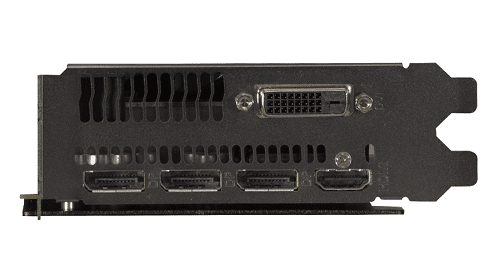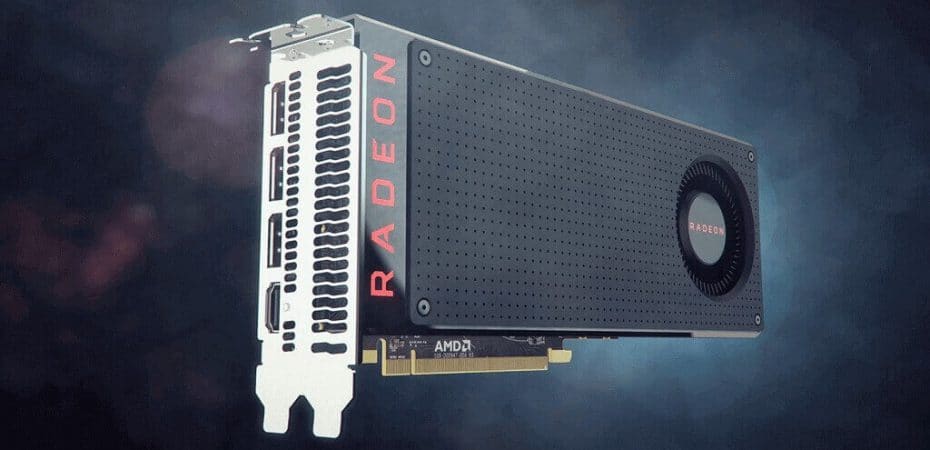When it first launched, The AMD Radeon RX 480 marked a significant moment in the VR gaming market, as it was the most affordable graphics card that met the specifications needed for HTC Vive and Oculus Rift. Since then, other similar offerings have been introduced by competitors and AMD themselves.
So, how has the introduction of Radeon RX 470 and the Nvidia GeForce GTX 1060 affect the standing of the RX 480 because all three are similar in terms of price and performance.
We must remind you that despite the competition, the Radeon RX 480 holds its own with Full HD 1440p for What hasn’t changed is its performance: this is a stonking Full HD and 1440p card for around $200.
Pros and Cons of Radeon RX480
Pros
- Outstanding 1080p performance
- Reliable 1440p performance
- Pocket-friendly VR-ready GPU
- HDMI™ 4K Support Available
Cons
- Slightly noisy
- Slightly slower than a GTX 970
- Bulkier than Radeon R9 Nano.
Specs And Tech Of AMD Radeon RX 480

We saw AMD shift from the GCN (Graphics Core Next) 3 architecture to the next generation Polaris or the GCN 4, which resulted in a major change in the physical design. A smaller 14nm has replaced the 28nm process, which has resulted in reduced power consumption and heat production.
If you compare the Nvidia Pascal’s 16nm process architecture found on the GTX 1070 and 1080, the 14nm process of the RX 480 8GB appears to be denser. However, we must remember that none of the GPUs launched by AMD rival the GTX 1070 and 1080, so we can’t do a fair comparison between the three. Nonetheless, AMD Radeon RX 480 8GB offers amazing power for an affordable budget, which gives it an edge over many others.
Although we must point out that this is a mid-range GPU, which is powerful for its price range but doesn’t offer any high-end, latest technology, therefore it is important to manage your expectations. The 2,304 stream processors and 36 compute units perform at the base clock speed of 1,120MHz and 1,266MHz boost speed with a power rating of 150W, which isn’t high.
The RX 480’s 5.8 trillion floating-point operations per second or TFLOPs are far better than the Nvidia GeForce GTX 970, which is similarly priced, but higher TFLOPs figures don’t necessarily equal better performance.
RX 480 has GDDR5 memory support – 4GB and 8GB. 4GB units cost less than the 8GB; they also differ in speeds: 4GB models have 7Gbps and the 8GB offer up to 8Gbps.
The asynchronous computing technology of the AMD Radeon RX 480 enables developers to assign different tasks according to priority levels, which allows games with DirectX 12 framework to run better.
Design and Ports Of AMD Radeon RX 480

There are no standout design features of the RX 480 except that it is a notch above the really cheap GPUs. The matte black plastic sides are pleasing but not impressive, the bottom of the cooler features a dotted plastic design, and there is no backplate, which is to be expected from a card of this price range.
The single fan cooling system does a decent job under load; it is audible but not too loud, so you may want a well-insulated case if you don’t like the sound.
A six-pin PCI Express power connector powers the card, and there is an HDMI port and three DisplayPorts at the back. The AMD Radeon RX 480 will support HDR games and monitors thanks to its 1.4 specification displayports.
Fan Noise And Temperatures
Gamers now have several great graphics card options available within a similar price range. Thus, apart from top-class performance, gamers have become conscious of other graphics card features, including fan noise and heat production.
Talking about the fan noise of AMD Radeon RX 480, it’s quiet in an idle state. However, we wish it featured an idle-fan-off feature so that you could enjoy perfect silence during light gaming, browsing, and desktop work. According to gamers, AMD has made efforts to reduce noise levels in Radeon RX 480; however, the noise levels are still bad.
It wouldn’t be unfair to say that RX 480 is one of the noisiest reference cards released in recent times. The heat production is also disappointing as it runs at 80°C. Other users have also complained about the temperature and noise levels of the Radeon RX 480.
It is disappointing that the noisy fan of RX 480 struggles to cool down the reference card. At a room temperature of 21°C, the card heats up to 40 degrees in an idle state. Under load, it usually heats up to 70 degrees and reaches about 81 degrees. We observed similar temperatures in Founder Edition cards, do AMD and Nvidia reference cards require an improved cooling system to control heat production.
VR-ready
Virtual reality is one of AMD’s main selling points, and the 480 is arguably the finest new entry-level card for anyone trying to create a computer for the Oculus Rift or HTC Vive. The 480 took everything we threw at it with ease.
It’s difficult to benchmark VR games because the Oculus, as well as SteamVR software environments, do so much work to keep everything as near to 90 frames per second as possible. Still, our real-world experience with Eve: Valkyrie, Edge of Nowhere, and Lucky’s Tale confirmed that this easily exceeds the minimum threshold for VR gaming.
A few tests, such as the SteamVR Performance Test, corroborated our observations. That tool rates the RX 480 as “Ready,” which is higher than “Not Ready” and “Capable.” In this test, the card produced everything at 90 frames per second.
Key Specifications
| Max Memory Size | 4 GB |
| Stream Processor | 2,304 |
| Speed | 1,120MHz base clock speed |
| Max Performance | Up to 5.8 TFLOPs |
| HDMI™ 4K Support | Yes |
| 4K H264 Decode | Yes |
| 4K H264 Encode | Yes |
| H265/HEVC Decode | Yes |
| H265/HEVC Encode | Yes |
Gaming Benchmark Results
We tested 3 popular games that are tough on both CPU and GPU to test the performance of the AMD RX 480 graphics card and compared it with NVIDIA GeForce GTX 970. The gaming benchmark results are as follows:
| AMD RX 480 | Comparison | |
| Hitman | 69.7fps at Full HD 54.3fps at 1440p | RX 480 was 20% faster than GTX 970 at Full HD RX 480 was 22% faster GTX 970 at 1440p |
| Rise of the Tomb Raider | 63.5fps at Full HD 44.2fps at 1440p | RX 480 was 6% faster than GTX 970 at Full HD RX 480 was 20% faster GTX 970 at 1440p |
| Middle-earth: Shadow of Mordor | 83.6fps at Full HD 57.2fps at 1440p | RX 480 was 2% slower than GTX 970 at Full HD RX 480 was 22% slower GTX 970 at 1440p |
Why Do We Recommend AMD Radeon RX 480?

If you are looking for the best graphics card that offers amazing specs and impressive performance without breaking your bank, Radeon RX 480 is a fantastic option.
Radeon RX 480 outdoes the performance of popular previous-gen cards that cost almost twice as much. It supports smooth and fast performance at even on 1080p and 4k. AMD Radeon RX 480 is a must-have for budget buyers as it delivers future-looking performance every time and where it counts the most.
Radeon RX 480 impressively holds 60fps at 1080p without compromising the gaming performance. It even performs reasonably well at 1440p. However, if you are looking for the best graphics card for gaming at resolutions higher than 1440p, then AMD RX 480 isn’t the best option. AMD RX 480 is also bulkier in design and more noisy than NVIDIA GeForce GTX 970.
Have you tried AMD Radeon RX 480? Please share your experience with us in the comments section.
Read Also
- Optical vs Laser Mouse
- 9 Best Gaming Mouse Under 50
- 9 Best Gaming Keyboards Under 100
- Merax Gaming Chair Review
- 9 Best Gaming Earbuds
- Kinsal Gaming Chair Review
- 8 Best Gaming Glasses
- Ficmax Gaming Chair Review
- Homall Gaming Chair Review
- How to Fix Geforce Experience Not Opening
- How To Fix Geforce Experience Error Code 0x0003
- Alienware Aurora R7 Review
- Corsair K95 RGB Platinum Review

